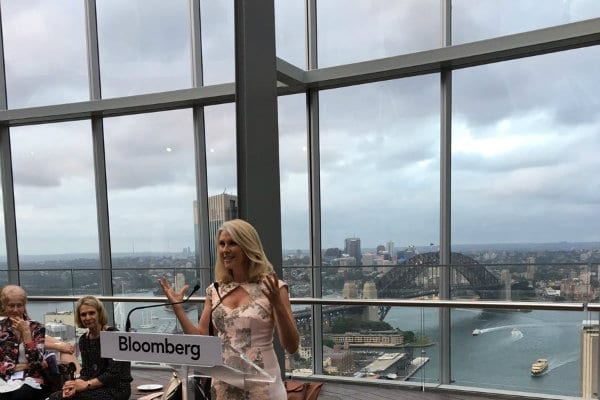
There’s “a special place in hell for women who don’t help other women”. It’s the Madeleine Albright quote you have heard a hundred times, at least.
The more powerful flipside, however, isn’t heard nearly often – or loudly – enough.
As one of Women in Media’s national patrons, Tracey Spicer, told a group of women gathered in Bloomberg’s Sydney offices last night, “There is a special place in all of our hearts for women who support other women.” And those women are everywhere.
The gathering itself was a case in point. The event was hosted by the NSW branch of WIM, a nationwide networking and mentoring initiative to support and nurture women working in all facets of the media. It is not even four years old but WIM has provided women in the media with something significant in addition to championing pay equity and online safety: solidarity and support.
Where are all the women? Right here! pic.twitter.com/BFqQP1wuH2
— Women in Media (@WIM_Aus) December 7, 2016
NSW WIM committee member and Huffington Post Australia’s editor in chief Tory Maguire explained the mere existence of WIM means women don’t have to pretend issues like online harassment and bullying don’t bother them. That in itself makes the “labor of love” powerful and worthwhile.
Because as Spicer said, notwithstanding improvements, the setting for women in media remains fraught.
“There is change but the pace is glacial. What I see is not only a backlash but a flashback to the male dominated culture of the past,” Spicer said. “This year alone we’ve seen Caroline Wilson threatened with being drowned, we’ve seen Mel McLaughlin humiliated live on air and The Age’s editor in chief Mark Forbes resign amid allegations of sexual harassment.”
This accords with some disturbing findings uncovered in WIM’s landmark research report published earlier this year. Like the fact 48% of respondents had experienced intimidation, abuse or sexual harassment in the workplace. Or the fact that 41% of women had been harassed, bullied or trolled on social media. The fact that 1 in 4 women who had taken maternity leave were either sacked or put on the so called nappy track.
In the words of Spicer: “It’s not bloody good enough.”
An astonishing night of networking and being awed by astonishing views. Thank you @WIM_Aus @JennaPrice @Woogsworld – loved meeting you all. pic.twitter.com/B1SvIo4MW9
— Dannielle Miller (@MillerDannielle) December 7, 2016
“To me – and maybe it’s because I’m nearly 50 – the new hipsterism in media looks an awful lot like the old sexism,” she said. “It’s easy to point to the dinosaur model of greying men being the enemy but structural discrimination in workplaces is being inherited by the next generation.”
There are bright spots though: organisations that recognise gender equality needs to be a priority. Organisations like Bloomberg which brought in quotas for quotes to ensure women’s voices are being heard. The BBC is going further with its pledge that women will hold 50% of on-air roles by 2020.
“Internationally the picture is incredibly bright,” Spicer said. “But the contrast with Australian-based organisations is stark. Our landmark survey shows the media has a blokey culture, tolerates harassment, pays lip service to work family balance and perpetuates the 23% gender pay gap.”
Is it any wonder that new research from the Women’s Leadership Institute of Australia and Women for Media shows women comprise just 1 in 5 sources quoted in newspapers?
Spicer recounted a conversation she had with a male media executive a few weeks ago. “He said ‘I’ve got a problem Trace. My paper is seen as too blokey.’ Where are all the women he asked?”
A cursory glance around the room last night confirmed, Spicer’s suspicions. “I don’t know where he’s looking because they’re everywhere.” It’s true.
How much longer “male, pale & stale” will last is up for debate. The fact PwC’s Australian Entertainment & Media Outlook 2016 – 2020, shows the average audience member is a woman aged 37, from a culturally diverse background who works in retail is interesting.
How can a media that doesn’t represent society continue to resonate?
As we navigate that terrain, plenty of women in media can seek solace, support and solidarity from their female peers thanks to Women in Media.
You can watch Tracey Spicer’s speech here:


